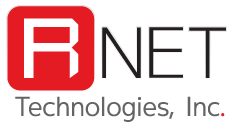Numerical modeling and simulation (M&S) is extensively used in numerous scientific and engineering fields and disciplines such as computational fluid dynamics, high energy physics, nuclear engineering, and computational finance. A plethora of commercial and academic softwares (e.g., ANSYS®/FLUENT, CFD-ACE+, StarCD) exist for numerical applications in various science and engineering domains and new ones are continuously being developed. In particular, modeling and simulation softwares and data sets for nuclear engineering applications play an important role in the design and operation of nuclear reactors. The Department of Energy’s (DOE) Office of Nuclear Engineering (NE) is developing the NEAMS (Nuclear Energy Advanced Modeling and Simulation) toolkit. The NEAMS toolkit will provide “pellet-to-plant” simulation capability with an unprecedented degree of predictability for a broad class of advanced reactor and fuel cycle systems by leveraging leading edge computational methods and high performance computing technologies. The NEAMS toolkit provides a comprehensive advanced reactor simulation suite that is state-of-the-art in the nuclear reactor design community. Transitioning the advanced simulations tools from the DOE NE to the nuclear engineering commercial users is crucial. The commercial users need these advanced tools to take the next step in developing modern Nuclear technology.
The simulation tools require a “workbench” to manage the inputs decks, simulation execution (on a local machine, a High Performance Compute cluster, or a Cloud cluster), intermediate results, final results and visualizations, and the provenance of the tools and settings. Such a workbench benefits a wide range of Large Scale Numerical Simulation users, but the advanced nuclear reactor development community has a particular need for such a workbench. The advanced reactor community requires the tools for a multitude of reasons;
- the need to install and run a wide range of tools (due to varying resolutions and physics simulation needs) can be mitigated by providing (controlled) remote access to preinstalled tools,
- sharing design inputs and simulation outputs can be used to allow industry (where a large number of end users reside) and government/academic (the primary developer of NEAMS applications) to communicate requirements, bugs/errors, specific use cases, and example problems,
- industry requires the ability to share designs with regulatory agencies during the review process, and
- researchers of advanced reactors would often benefit from being able to perform iterative modifications to historic simulations (either that they or a colleague have developed).
As the U.S. and the world ramp up to deploy new advanced nuclear reactors, the ability to leverage advanced codes, deploy on HPC and Cloud resources, and share experiments (for collaborative and regulatory scenarios) is becoming critical to the design and regulatory process. While the required workflow management tools often exist in vendor simulation suites, they are missing from open sourced and government codes.
CloudBench is a hosted simulation environment for large scale numeric simulations. CloudBench:NE is the application of CloudBench to Nuclear Engineering simulation tools. CloudBench will augment existing simulation, Integrated Development Environment, and workbench tools being developed by the DOE and industry. It offers a complete set of simulation management features not available in existing tools;
- sharing of configurations, simulation output, and provenance on a per simulation or per project basis (ensuring that export control and license restricts are maintained),
- hosted versions of advanced simulation codes (removing the need for end user installation),
- multi-simulation provenance history to allow simulations to be reconstructed, verified, or extended,
- remote access to simulation tools installed on Cloud and HPC resources, and
- commercial support for a workbench that supports open sourced code, government sourced codes, and multiple vendor workflows.
|
Features |
Advantages |
Benefits |
|
Simulation Setup Sharing |
Easily share simulation setup amongst users and regulators. |
Allow improved regulator collaboration amongst scientists, reduce the burden for a regulator to duplicate identical simulations. |
|
Visualization Sharing |
Allow collaborators and regulators to view existing results without rerunning the simulation. |
Reduce time and resources required to visualize existing results resulting in improved collaboration and quicker time to results. |
|
HPC Simulation Management |
Allow easy access to all available HPC resources. Reduce user interaction with HPC platform. Automatic cluster selection. |
Improved ability for advanced reactor developers to leverage HPC resources. |
|
Cloud Simulation Management |
Allow easy access to commercial and private clouds. |
Much easier access to high performance compute architectures without any upfront infrastructure investment. |
|
Pre-Installed Cloud Applications |
Preinstalled applications reduce need to acquire and install complicated applications (Licenses and Export Control will be maintained). |
Easier access to applications. |
|
REST API |
Common interface that can be integrated into third-party applications. |
Enables support in third-party applications, e.g., NEAMS workbench. |
|
Provenance History |
Store a history of simulation applications, version information, input/setup information, machine information, and output. |
Allow experiments to be verified and/or duplicated by a colleague or third-party. |

